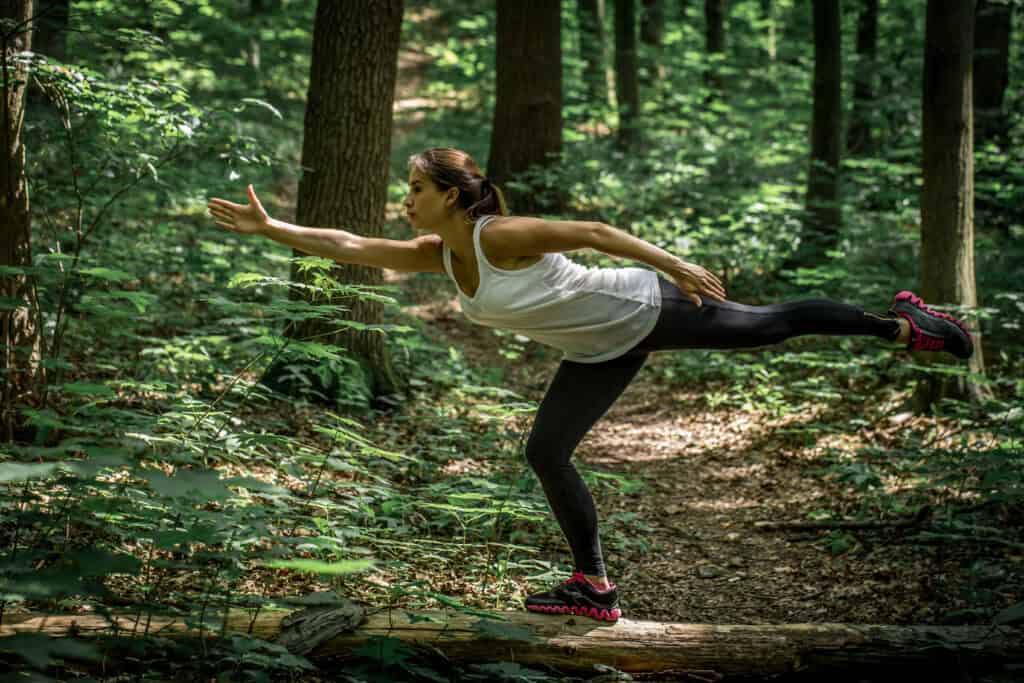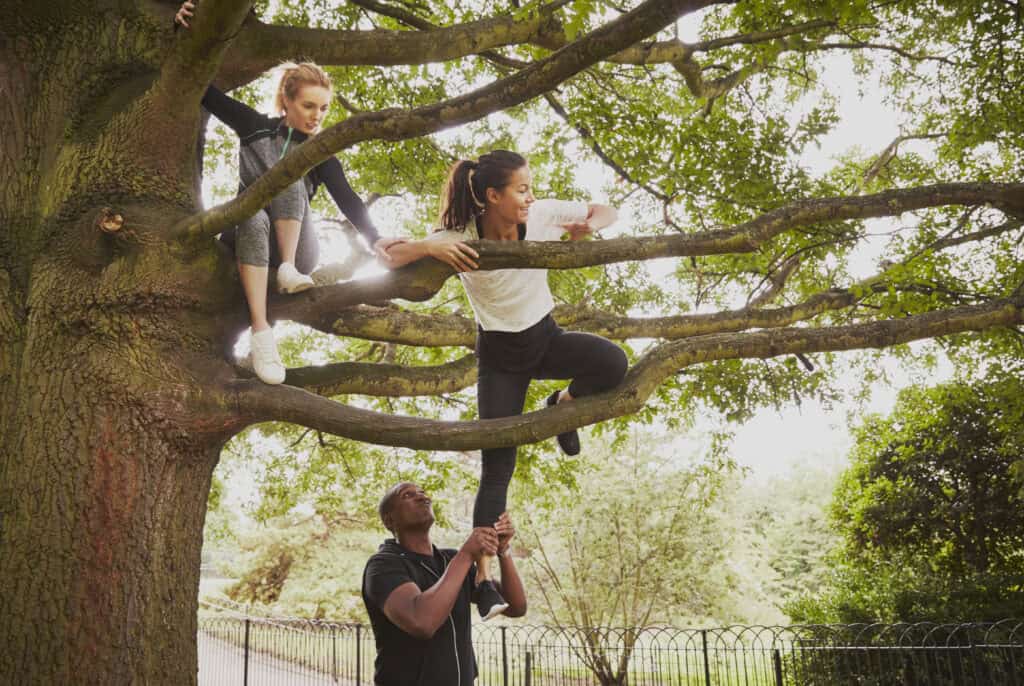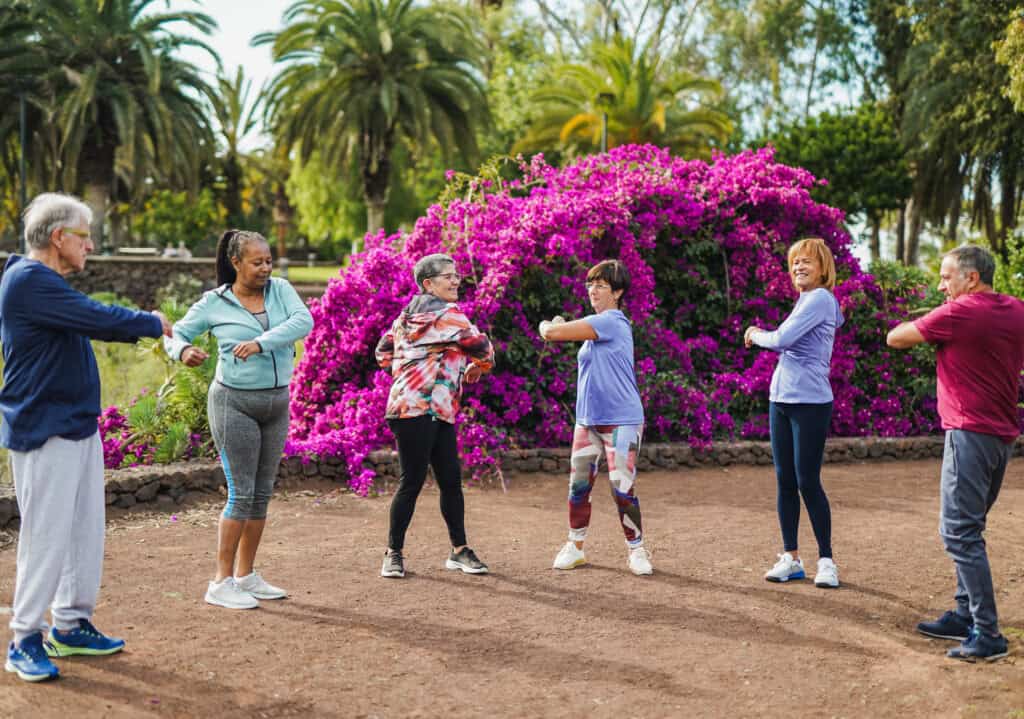Do you ever hit that 3 p.m. wall where your brain feels like it’s wading through mud?
Movement and the Mind
You are not alone. Multitasking and digital distractions dominate our lives, and mental fatigue has become a shared experience and struggle. While productivity apps or caffeine are got-to solutions, however, science suggests a more effective – yet overlooked – remedy: physical activity.
More than just a tool for physical fitness, exercise is emerging as a foundation of cognitive wellbeing. It’s capable of increasing memory, sharpening focus and protecting the brain across the lifespan.
How Exercise Fuels Cognitive Vitality
Increased Cerebral Blood Flow
At the cellular level, physical activity increases cerebral blood flow, which delivers oxygen and nutrients that neurons need to thrive. In addition, improved circulation also clears metabolic waste, reducing inflammation and oxidative stress – both of which are implicated in cognitive decline.
Immediate Cognitive Enhancements
Furthermore, even a single session of moderate physical activity can result in immediate improvements in executive function and processing speed, particularly in tasks requiring attention and problem-solving. Over time, consistent exercise has been shown to stimulate angiogenesis (growth of new blood vessels) in the brain, further supporting long-term brain health (6).
Long-Term Brain Health
However, individuals who are more physically active may also have better baseline health, which itself contributes to improved cognitive outcomes. Therefore, in some cases, physical activity might serve as a marker of cognitive health rather than a direct cause.
Given that, longitudinal studies—like those by Erickson et al.—offer stronger evidence by tracking brain changes over time. Still, the field continues to distinguish between correlation and direct mechanistic causation.
Neuroscience Insight
Our brains weren’t built to sit still. In fact, modern neuroscience suggests that movement is a biological trigger for mental activation. Specifically, physical activity stimulates not just blood flow – but a cascade of neurochemical reactions that improve communication between brain regions.
One key finding: exercise strengthens the brain’s default mode network (DMN), which is responsible for introspection, memory recall and future planning. A more robust DMN is linked to greater emotional regulation, self-awareness and resilience (7).

Movement and the Brain: A Neuroscience Perspective
In addition, movement helps balance the brain’s task-positive and task-negative networks (often studied using fMRI, which measures blood-oxygen-level-dependent (BOLD) signals, revealing real-time changes in brain activity during cognitive switching tasks), which allows for smoother transitions between focused work and creative thinking. This balance supports cognitive flexibility – an essential skill for problem-solving and adapting to change (2).
Balancing Brain Networks
EEG studies have also shown modulations in alpha and theta band activity during and after movement, which may reflect improved attention and working memory processes (2). These modalities give us a clearer window into how exercise reshapes brain function—not just structurally, but dynamically.
What’s more, different types of exercise—such as aerobic versus resistance training—appear to impact distinct neural circuits. Aerobic activity tends to increase hippocampal volume and prefrontal cortex plasticity through elevated BDNF levels. On the other hand, resistance training may more strongly influence dopaminergic pathways related to motivation and reward regulation (8, 12).
Neuroplasticity and the Cognitive Benefits of Physical Activity
Physical activity, particularly aerobic exercise, boosts the production of brain-derived neurotrophic factor (BDNF) – a protein important for neuroplasticity. BDNF supports the survival of existing neurons and promotes the growth and differentiation of new neurons and synapses, especially in the hippocampus, the brain’s memory and learning hub.
Reversing Age-Related Brain Changes
For example, a landmark study by Erickson and colleagues found that one year of aerobic training increased hippocampal volume by 2%, effectively reversing age-related shrinkage (1). This anatomical change was linked with improved spatial memory.
While studies like this suggest a causal relationship, it’s still important to interpret findings within context. While randomised controlled trials and brain imaging provide stronger evidence, more research is needed to determine exactly how and for whom these brain changes occur as a result of physical activity.

Cognitive Control and Emotional Regulation
The impact of exercise isn’t limited to memory – it also improves executive functions such as planning, inhibition, task-switching, and emotional control. In turn, these skills support better decision-making and self-regulation. Studies show that physically active individuals perform better on executive function tasks, regardless of age (12). If you’re interested in how movement-based strategies can help children with impulse control and behavioural challenges, read Understanding Challenging Behaviours in Children.
Mood Regulation Through Neurotransmitters
Additionally, exercise helps regulate mood through increased production of dopamine, serotonin and endorphins, which modulate motivation, reward, and emotional wellbeing. This biochemical response underlies why physical activity is a frontline recommendation for managing anxiety and depression.
Emerging research is also exploring how these neurotransmitter changes correlate with functional activation in brain regions such as the anterior cingulate cortex and ventral striatum—areas implicated in emotional regulation and adaptive behaviour. Future work using neuroimaging will help clarify these links.
Cognitive Benefits of Physical Activity Across Lifespan
Children and Adolescents
For young learners, movement is more than play – it’s foundational to learning. Children who engage in regular physical activity show better concentration, working memory and academic performance. Programs integrating physical activity into school curricula have demonstrated improved test scores and classroom behaviour (11).
For practical tips on how to support brain development through movement in home settings, explore 10 Strategies to Foster a Culture of Movement and Play in Families. It offers age-appropriate routines and rituals that embed play into daily life.
Adults
Among working-age adults, exercise can serve as a cognitive buffer against stress and fatigue. Regular physical activity has been linked with better attention control and quicker information processing in this demographic (7).
Older Adults
Perhaps the most compelling evidence for exercise’s cognitive benefits comes from aging research. Older adults who remain physically active experience slower cognitive decline and lower risk of dementia, including Alzheimer’s disease. In fact, some studies suggest up to a 35% reduction in dementia risk with sustained physical activity (10).

Acknowledging the Barriers: When Movement Isn’t Easy
Of course, while the benefits of movement are well-established, it’s important to recognise that increasing physical activity isn’t universally feasible. Many people face real-world challenges that make it harder to integrate exercise into daily life.
Physical Limitations
Individuals with disabilities, chronic pain, or limited mobility may be unable to engage in traditional forms of physical activity. Adapted strategies – such as chair-based movement, water therapy, or gentle range-of-motion routines – can provide meaningful alternatives.
Socioeconomic Factors
Socioeconomic factors also play a major role. Some people lack safe spaces to walk, cannot afford fitness classes or gym access, or have jobs with inflexible hours. Others may experience cultural or psychological barriers to adopting movement-based routines.
Health Limitations
High-intensity workouts, often promoted as ideal, may not be suitable for older adults or those with health conditions. For these populations, light- to moderate-intensity movement like walking, gardening, or stretching can still yield significant cognitive benefits without overexertion.
Addressing these challenges requires inclusivity in how we design and communicate about physical activity. Movement should be framed not as a one-size-fits-all prescription, but as a flexible spectrum of options.
Movement is one part of a larger system of care. For more strategies on building emotional resilience in family life, explore How Can Parents Build Emotional Resilience in Themselves and Their Children?.
Practical Ways to Move with Intention
You don’t need a gym membership or marathon goals to boost brain health. Here are practical ways to move with intention:
Micro-breaks:
Set a timer to stand or stretch every 45–60 minutes. Even short bursts of movement reduce mental fatigue and improve focus.
Walking meetings:
Swap sitting for strolling during work calls or team discussions. Walking has been shown to increase creativity and collaborative thinking.
Mindful movement:
Try yoga, Tai Chi, or simple breath-led stretching to calm the nervous system and reset attention.
Brain-boosting cardio:
Commit to at least 30 minutes of brisk walking, cycling, or dancing 3–5 days per week. These routines increase hippocampal volume and slow age-related cognitive decline (10).
Active play:
Rediscover playful movement—frisbee, jumping rope, or even hula hooping. Play isn’t just for kids; it sparks joy and mental engagement in everyone.
PAUSE AND REFLECT
Think about the last time you felt mentally drained or emotionally stuck.
What happened when you stepped outside for a walk, danced to your favourite song, or stretched on the floor?
Now consider this: what would change in your life if you made movement a daily mental reset – just as essential as your morning coffee or calendar check?
Cognitive Boost Without the Gym: Everyday Movement that Works
Interestingly, the cognitive benefits of movement aren’t restricted to structured workouts. In fact, light-intensity activities such as walking, gardening, or household chores can also contribute to brain health. Walking, in particular, has been shown to increase creativity, working memory, and divergent thinking.
Even movement breaks during long periods of sitting – like stretching or walking for a few minutes every hour – can improve cognitive engagement and reduce mental fatigue. In professional settings, incorporating walking meetings or short physical breaks can lead to more productive and creative outcomes.
Again, while these benefits are well-documented, they may in some cases reflect broader lifestyle factors or pre-existing health differences. Differentiating causal effects from associated habits is a current focus of ongoing research.
Mental clarity is also about creating space. See Creating Digital Boundaries to Protect Your Mental Space for ways to reduce screen overload and make room for reflection, rest and movement.
How Much Movement do You Need for Brain Benefits
While movement is beneficial in almost any form, clarity around optimal duration and intensity helps guide sustainable habits. Research shows that light-intensity activities – like walking, housework, or gentle stretching also improve cognitive performance, especially in older adults or those new to exercise (9).
Current recommendations suggest:
- For adults: Aim for 150 minutes per week of moderate-intensity aerobic activity (like brisk walking), or 75 minutes of vigorous activity (like jogging) spread across the week, plus two days of muscle-strengthening activities (1).
- For children and teens: Engage in at least 60 minutes of physical activity daily.
- For older adults or those with limitations: Focus on balance, flexibility, and low-impact activities such as Tai Chi, water aerobics, or chair yoga, adjusted to ability and comfort level.
Consistency is more important than intensity – small, regular bouts of movement are better than none at all.

Cultural Connection
Across many traditions, movement is tied to meaning. Traditional Chinese medicine views movement as a way to harmonise energy, or “qi,” within the body. Practices like Tai Chi and Qi Gong blend physical movement with breath and mindfulness, shown to improve balance, reduce anxiety, and increase cognitive function.
Additionally, among Indigenous communities, movement is deeply embedded in ceremony, storytelling and spiritual expression. From dance rituals to seasonal migrations, physical movement is interwoven with identity, connection, and reflection.
This lens reminds us that movement isn’t separate from meaning – it is meaning. Every step, every sway, every motion can be a return to balance.
This holistic approach shows how many cultures have long recognised that movement supports mental clarity – well before modern neuroscience caught up.
Final Thoughts
Our minds and bodies were never meant to be separated. Physical activity is one of the most reliable, science-backed strategies for improving memory, focus, mood and long-term brain health.
Still, as research continues, it’s vital to approach claims with nuance—acknowledging both the promising causal pathways and the complex lifestyle factors that may also influence cognitive outcomes.
Weaving together behavioural outcomes with deeper neuroscientific insight can help us better understand how and why movement affects cognition. Next time you’re mentally foggy, don’t just push through.
Pause. Move. And meet your brain where it thrives.

Reflect
So, the next time you feel foggy—pause, move, and let your brain breathe.
Share this insight with a friend or colleague who needs a mental reboot.
References:
- Erickson, K. I. et al. (2019). Physical activity, Cognition, and Brain Outcomes: A review of the 2018 Physical Activity Guidelines. Medicine & Science in Sports & Exercise, 51(6), 1242–1251. https://doi.org/10.1249/mss.0000000000001936
- Gomez‐Pinilla, F., & Hillman, C. (2012). The influence of exercise on cognitive abilities. Comprehensive Physiology, 403–428. https://doi.org/10.1002/cphy.c110063
- Reed, P. (2021, December 15). Physical activity is good for the mind and the body – Office of Disease Prevention and Health Promotion. https://odphp.health.gov/news/202112/physical-activity-good-mind-and-body
- Godman, H. (2014, April 9). Regular exercise changes the brain to improve memory, thinking skills. Harvard Health. https://www.health.harvard.edu/blog/regular-exercise-changes-brain-improve-memory-thinking-skills-201404097110
- Manning, J. R., Notaro, G. M., Chen, E., & Fitzpatrick, P. C. (2022). Fitness tracking reveals task-specific associations between memory, mental health and physical activity. Nature Scientific Reports, 12(1). https://doi.org/10.1038/s41598-022-17781-0
- Basso, J. C., & Suzuki, W. A. (2017). The effects of acute exercise on mood, cognition, neurophysiology and neurochemical pathways: a review. Brain Plasticity, 2(2), 127–152. https://doi.org/10.3233/bpl-160040
- Stillman, C. M., Cohen, J., Lehman, M. E., & Erickson, K. I. (2016). Mediators of Physical Activity on Neurocognitive Function: A review at Multiple Levels of analysis. Frontiers in Human Neuroscience, 10. https://doi.org/10.3389/fnhum.2016.00626
- Bergland, C. (2017, January 16). Cardiorespiratory fitness boosts brain activity and improves memory performance. Psychology Today. https://www.psychologytoday.com/gb/blog/the-athletes-way/201701/physical-fitness-keeps-your-brain-in-good-shape-study-finds
- Witts, J. (2025, March 28). How a gentle walk makes you brainier than a hard sprint: Results of groundbreaking study shock scientists. Countryfile. https://www.countryfile.com/health/walking-makes-you-brainer
- Hamer, M., & Chida, Y. (2008). Physical activity and risk of neurodegenerative disease: a systematic review of prospective evidence. Psychological Medicine, 39(1), 3–11. https://doi.org/10.1017/s0033291708003681
- Donnelly, J. E. et al. (2016). Physical activity, fitness, cognitive function, and academic achievement in children. Medicine & Science in Sports & Exercise, 48(6), 1197–1222. https://doi.org/10.1249/mss.0000000000000901
- Guiney, H., & Machado, L. (2012). Benefits of regular aerobic exercise for executive functioning in healthy populations. Psychonomic Bulletin & Review, 20(1), 73–86. https://doi.org/10.3758/s13423-012-0345-4
This piece was written for you by
Making complex ideas accessible and sparking meaningful conversations.
